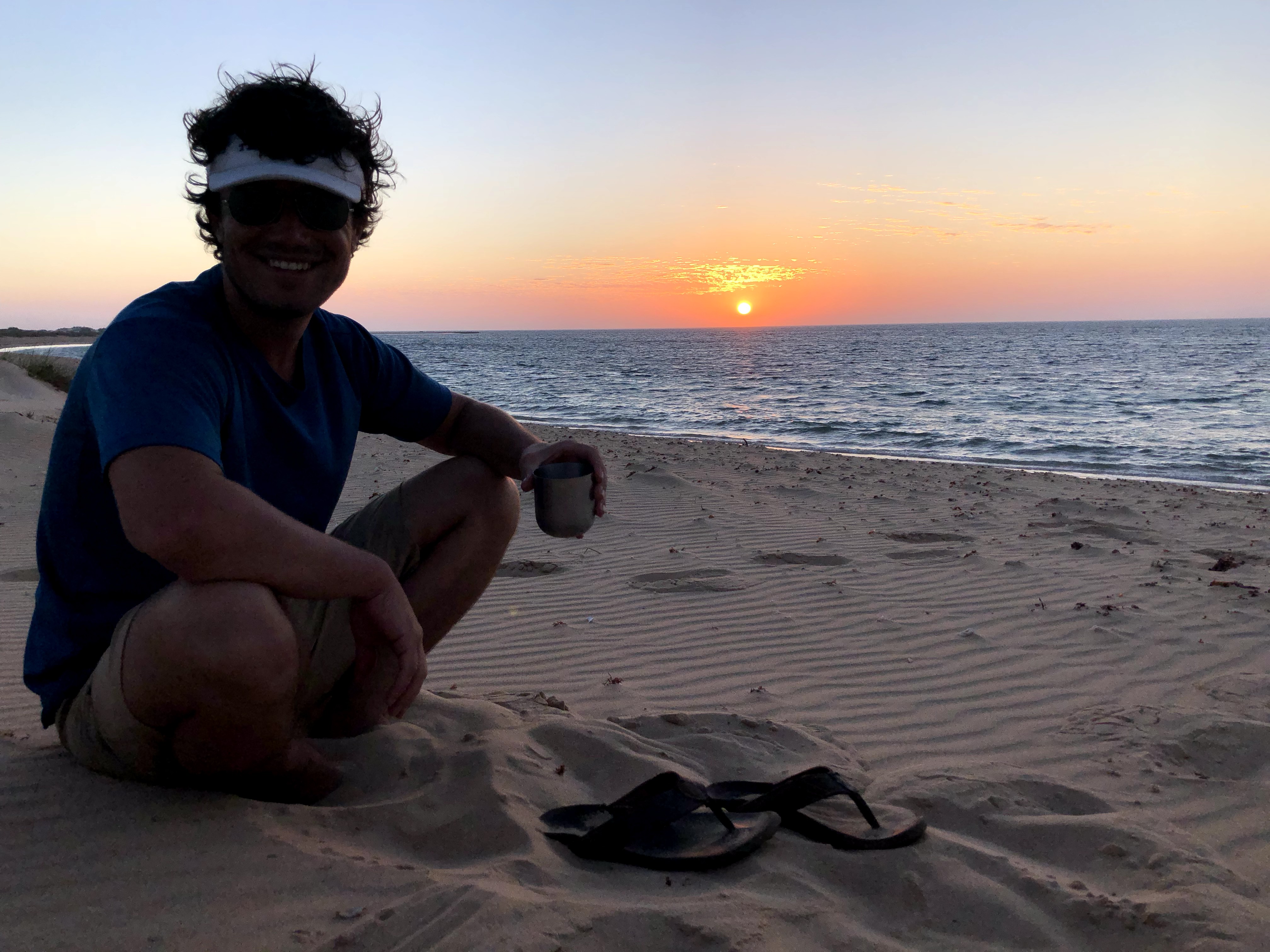
West Coast Best Coast: The Incredible Ningaloo Reef
So we’ve seen this hashtag around on Instagram, #westcoastbestcoast, and yep, we’re definitely on board. It’s hard to believe that we spent about 2 weeks on and around Ningaloo Reef – definitely more than we’d planned, especially since we’ll be back this way in May-ish to swim with the whale sharks (none around at the moment – they’ve all migrated away for the season). Ah well, we keep being reminded that plans don’t count for much on a trip like this. Plans are made for breaking!!
Here’s two maps to orient you to the rest of this post. First, our entire trip so far, with the area covered in this post in green, and previous areas in red:
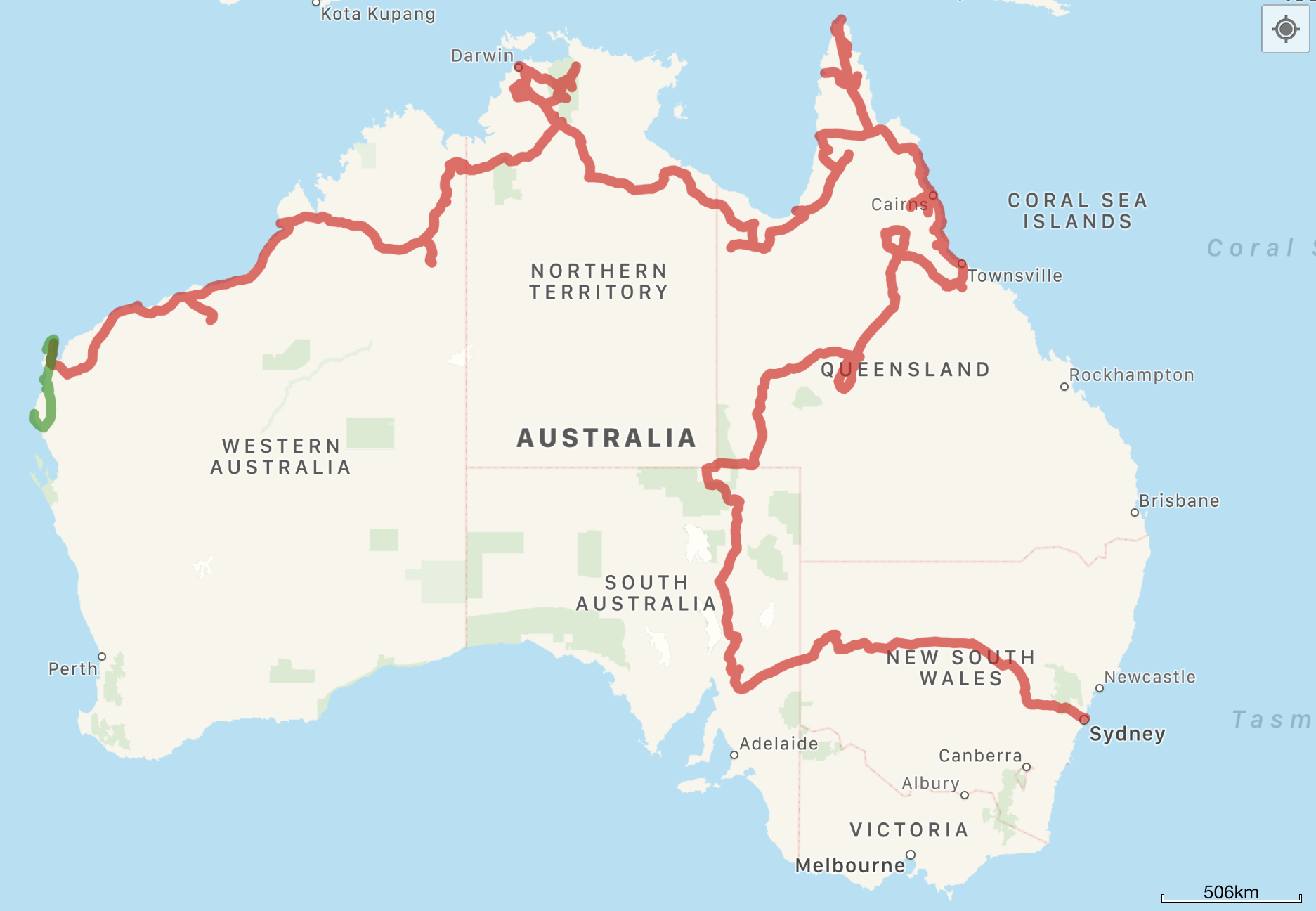
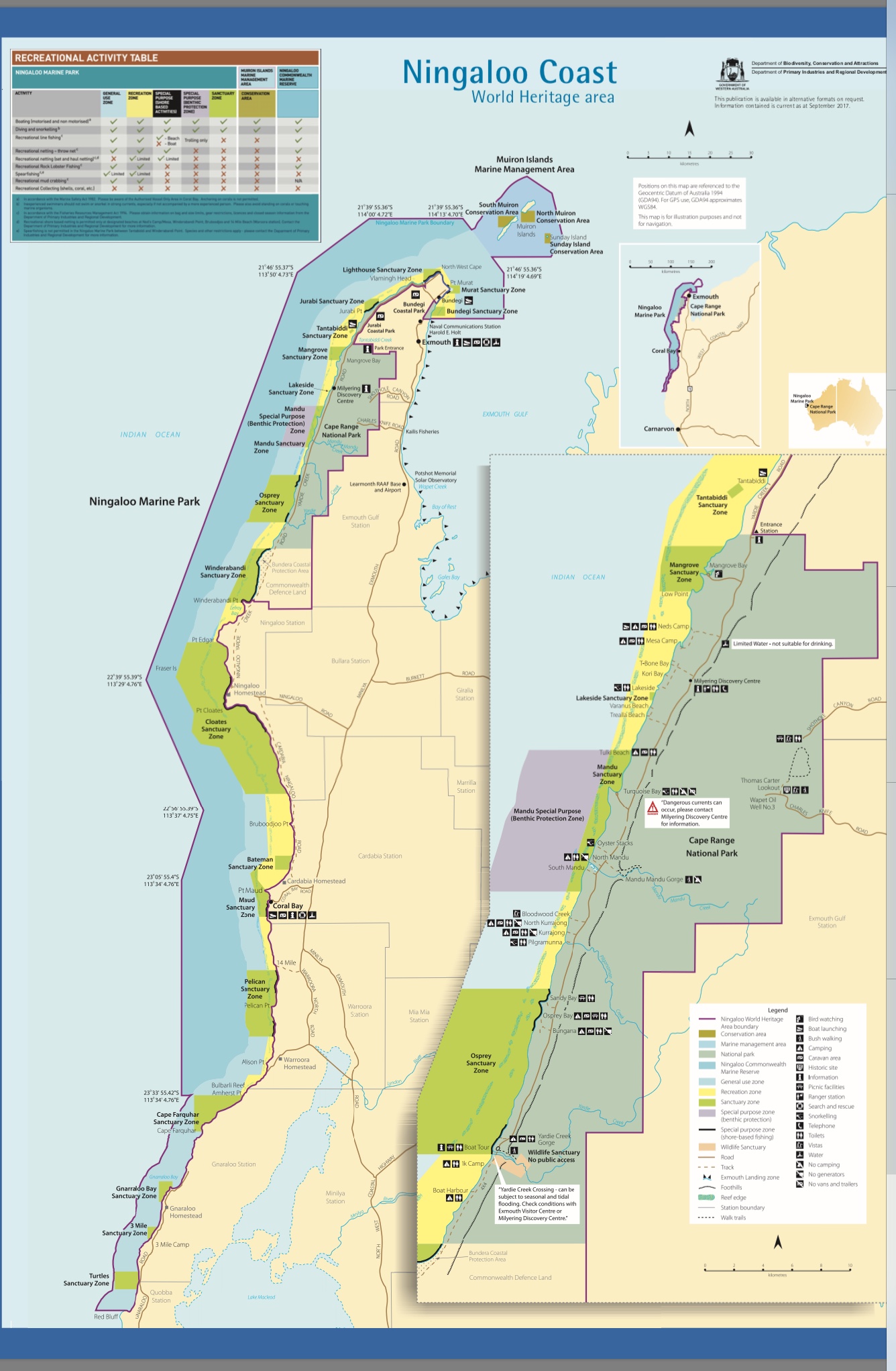
Ningaloo Reef is a 300km long coral reef which is uniquely close to beaches and shoreline. Unlike the Great Barrier Reef which is 10 times longer but, at its closest, approximately 20km from the shore of Australia’s northeast coast, Ningaloo Reef is absolutely swimmable from shore in countless places along the northwest coast. In practical terms, this means that to snorkel or dive at the Great Barrier Reef, you’d most likely need to go with an organised tour group and pay a fee, no matter what. On Ningaloo Reef there are also organised tours and dives for a fee, but if you just want to check it out or are on a limited budget, it’s totally free to just wade in and have a look.
Which we did! Check out our little snorkel video, below:
That video is just the beginning, and doesn’t even capture all of the snorkel sites we went to – we brought the GoPro on maybe half of our excursions? There was also lots of life to see in addition to fish: we saw turtles (I loved swimming alongside them for a while – if you don’t make any sudden movements they’re quite happy to swim along with you for a bit, doing some mutual side-eye checking out), stingrays, sharks, sea slugs, colourful corals (bright green, yellow, lavender, bright blue, red), giant clams, beautiful sunsets and white sand beaches…oh man, this place is just so awesome.
Not to mention, around the Great Barrier Reef you’ve got crocodiles and deadly jellyfish to contend with – none of that around here.
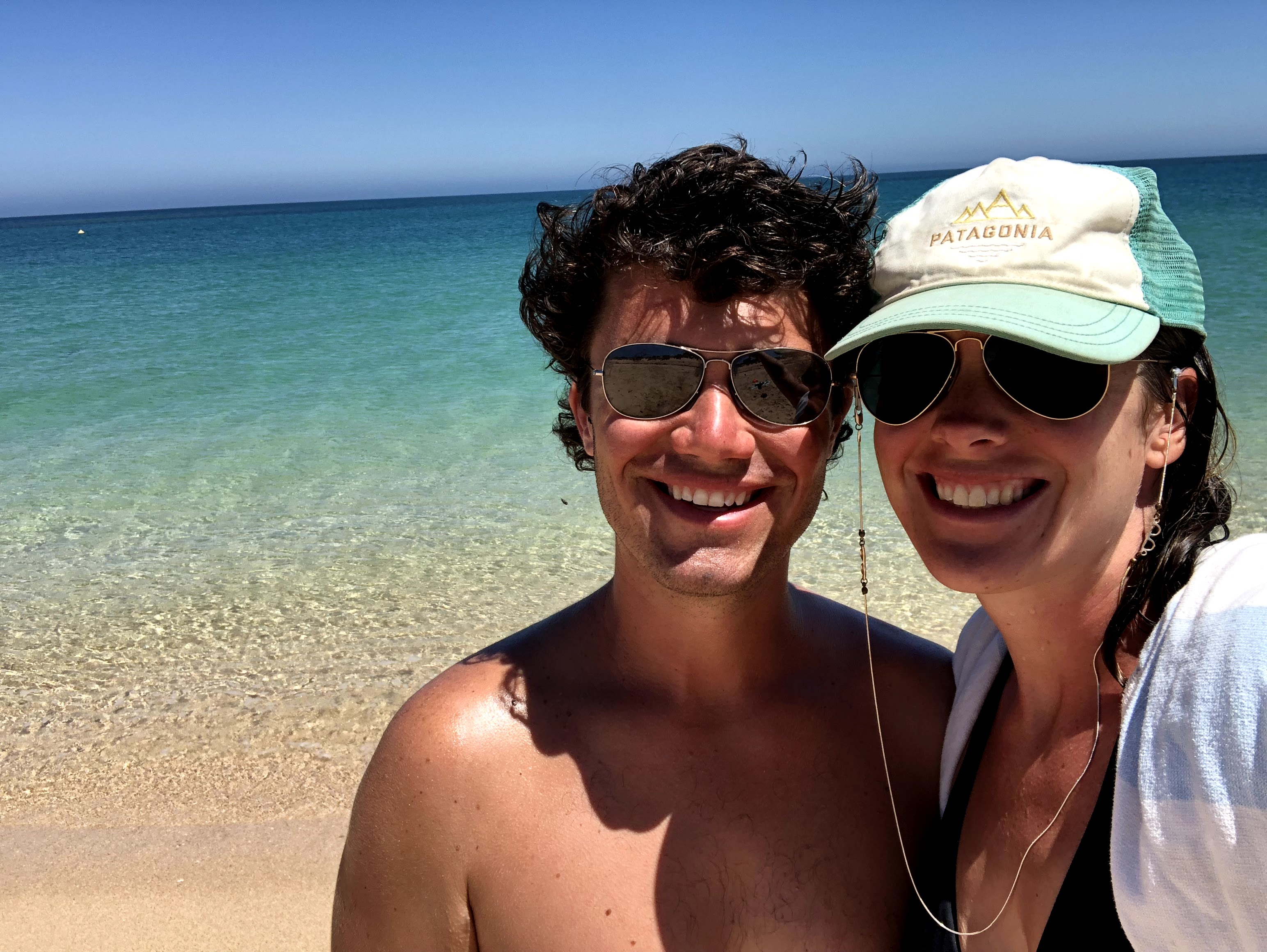
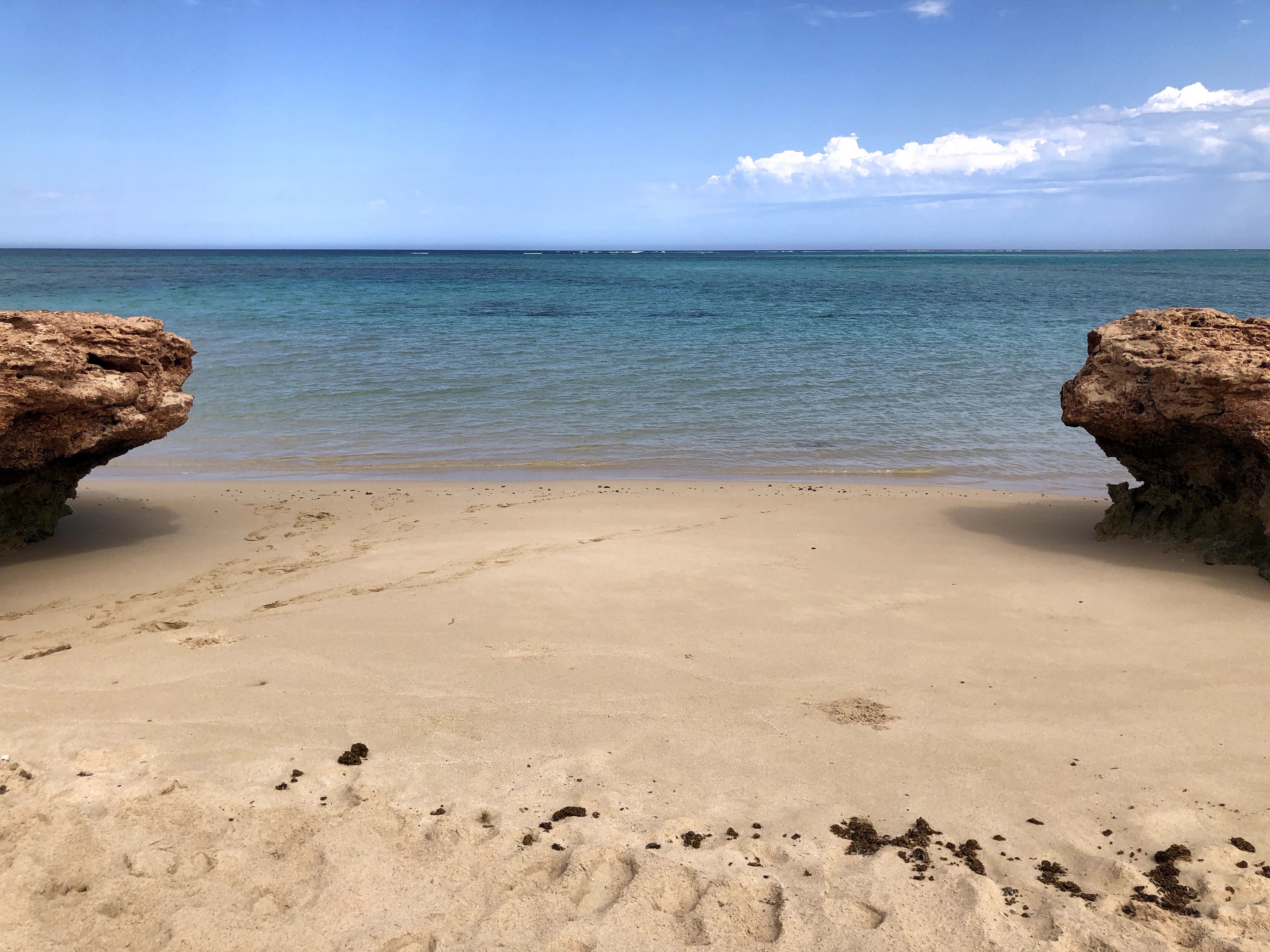
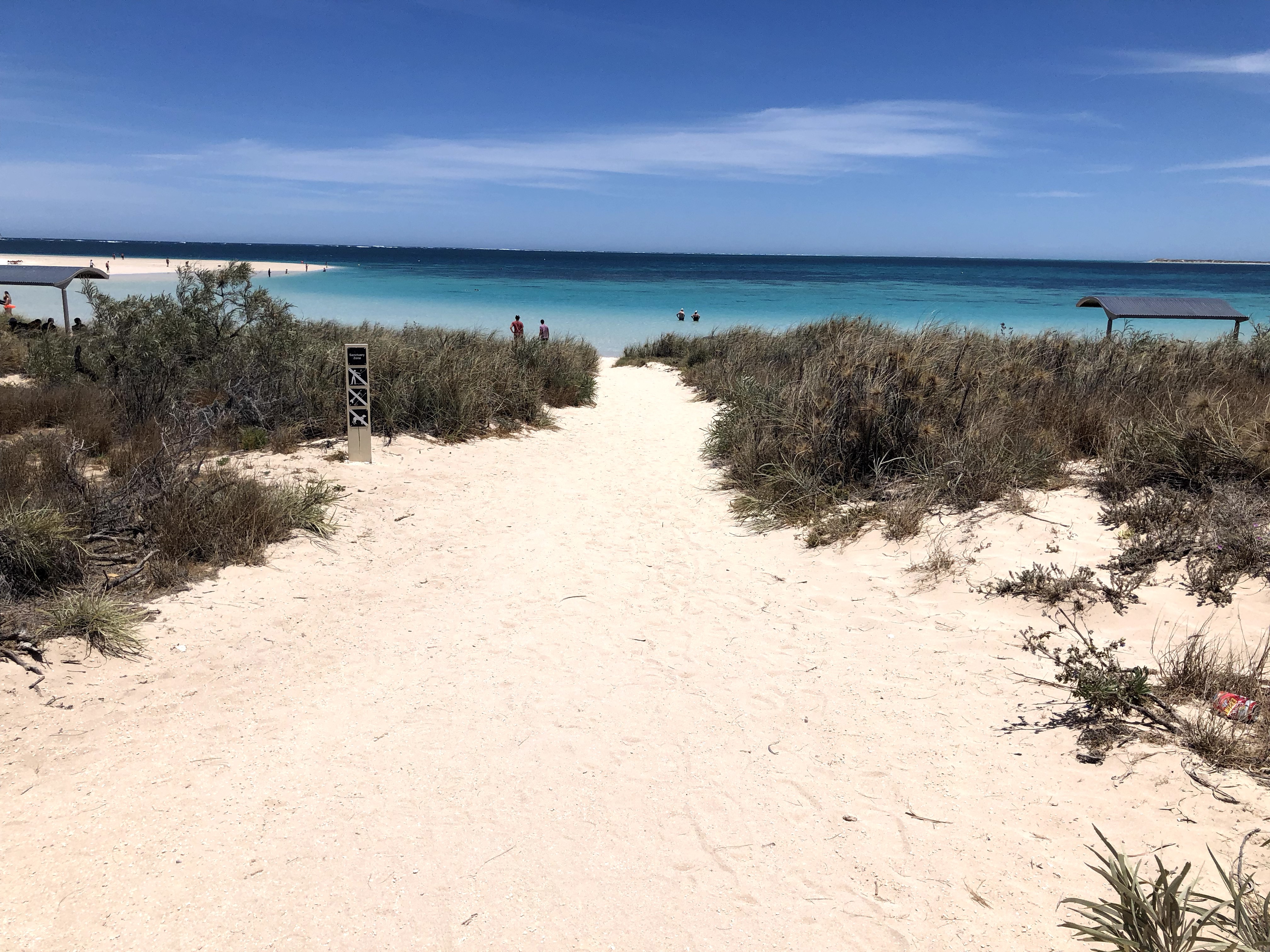
It wasn’t just sea life we saw around Ningaloo Reef, either. There seemed to be a resident emu family (did you know the dad raises the babies?) in Exmouth who came to check us out.

Our campsites in this region were out of this world. Cape Range National Park has many excellent campgrounds. Our favourite of the three we tried was Osprey Bay (we also tried Ned’s Camp and Mandu), but all were steps from a beach and had a great feeling of ruggedness and isolation, without being truly isolated.


After a week around Cape Range we headed south to Coral Bay, a small town of around 200 people around the midpoint of the reef, with a few snorkeling spots of its own, including Five Fingers Reef, along a sandy track (4wd only, and for god’s sake let your tyre pressures down to avoid tearing up the track) among white dunes. Loved breaking out the sand flag again for the first time since the Simpson Desert!
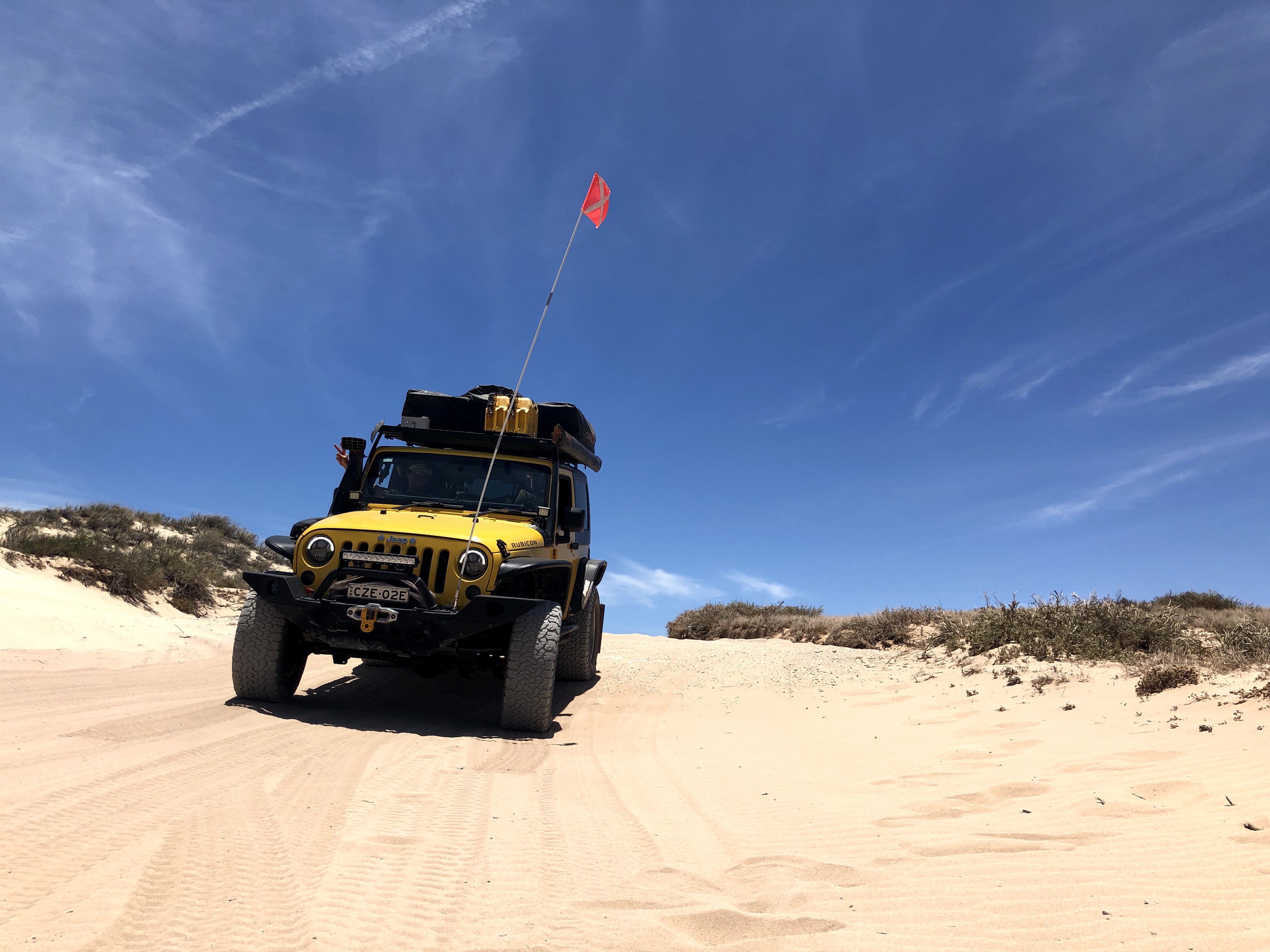
We also camped at the southern end of the reef, at Gnaraloo Station (3 Mile Lagoon area) and checked out the very southernmost point, Red Bluff on Quobba Station (a station is a ranch, for our North American friends). Station camping is very common and popular in Australia, and it also helps to add some level of predictability to station revenue streams to buffer the impact of things like drought, fire, disease, etc.
We love it for another reason too: the campsites are often more remote and spread out than in a National Park or Caravan Park. Look, we’re social people and love to have a chat, but sometimes you just want your own little corner of paradise.
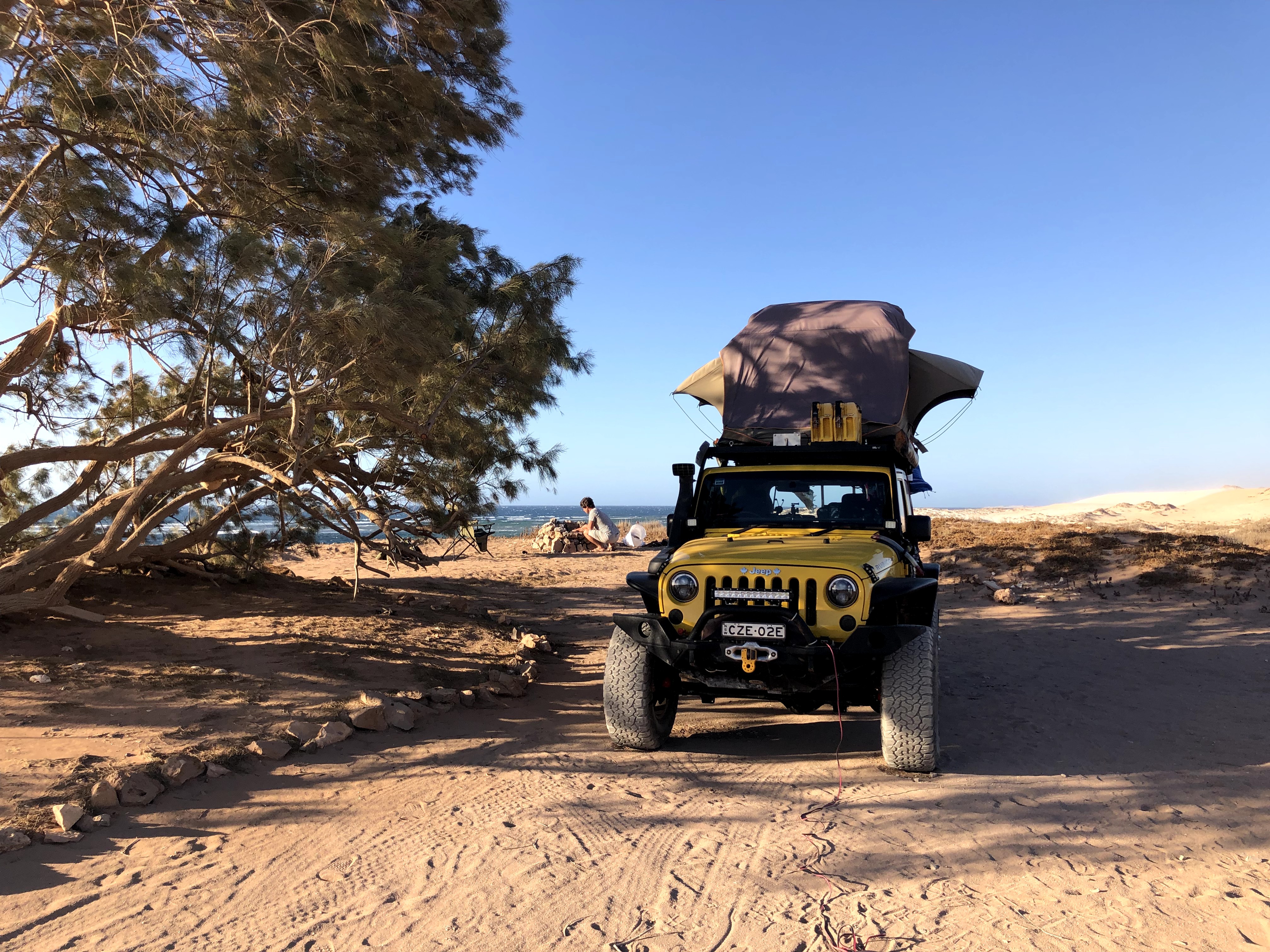

And if all that camping, snorkeling, wading with sharks, and exploring isn’t enough to keep you busy along the Ningaloo Coast, Exmouth also boasts two decent craft breweries: Whalesbone, and Froth. Of course we checked them both out for you, and happy to report both are very much worth a visit if you’re tired of snorkeling (or too crisply sunburned to dare venture out again).
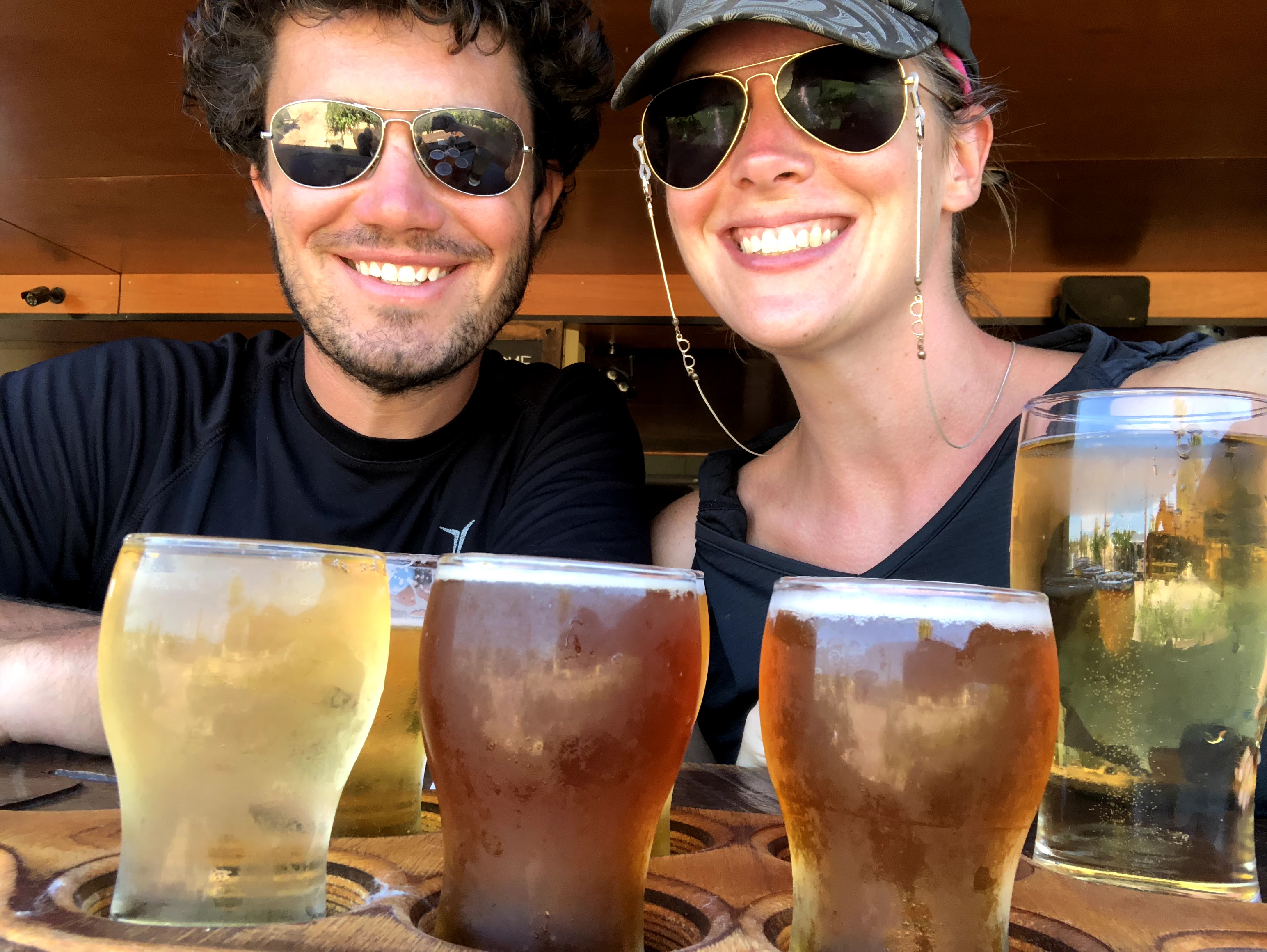

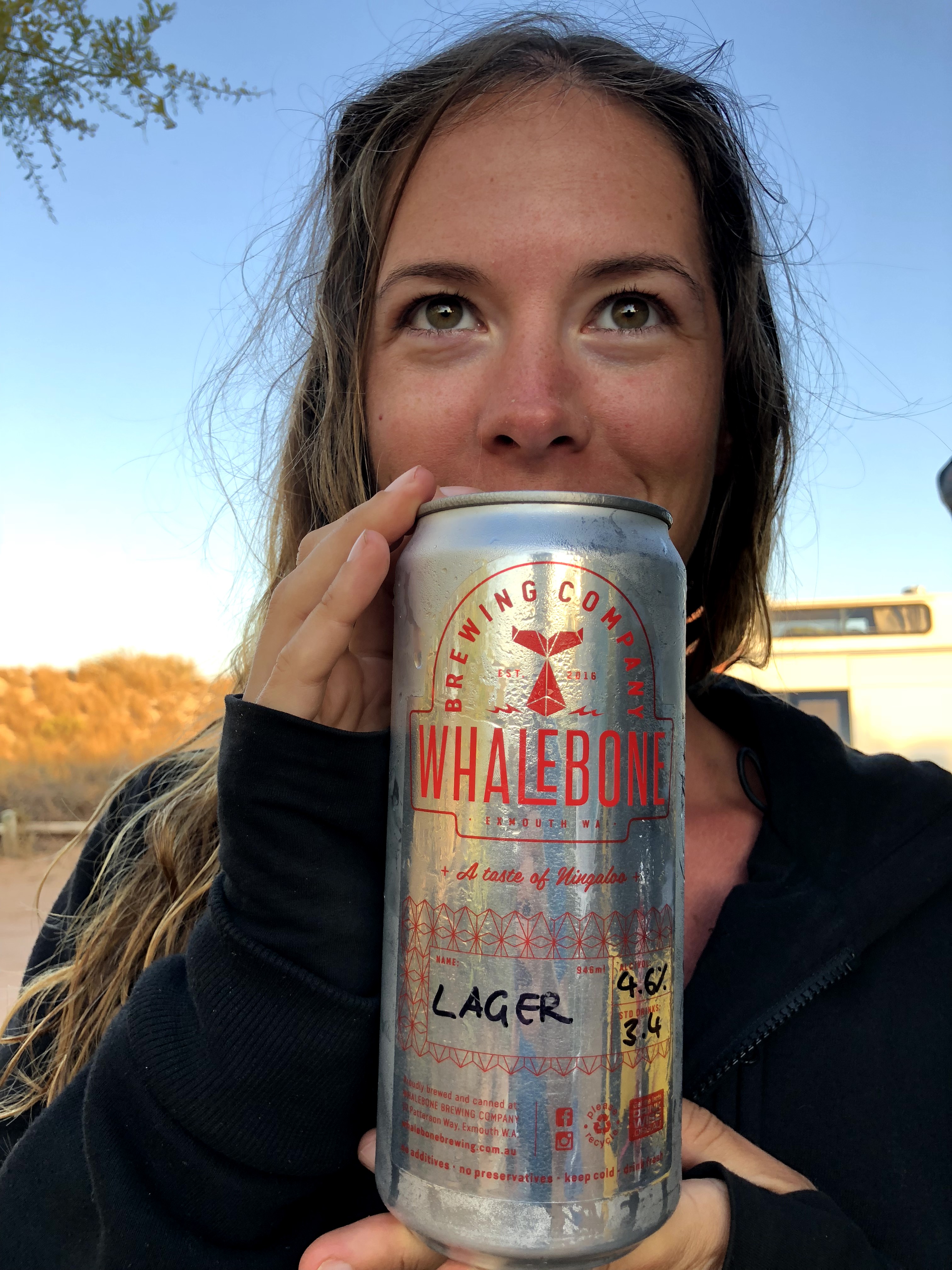
In our two weeks up here, we’ve also acquired some pretty impressive tan lines due to all the time in the water and out on the beach. I dare say that these may be the best tans we’ll have in our lives, since from here we head south, where it’s cooler and we’ll likely be balancing our time between bush walks, beaches, history, culture, and wine & food. Up on the Ningaloo Coast, there’s not a whole lot of competition for the reef!
